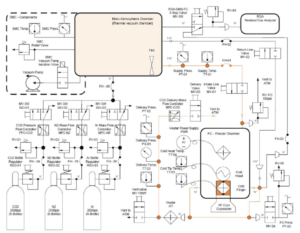Use of Extraterrestrial Resources and Recycling Water: Curb Your Enthusiasm
Introduction
The interplay between Technology and Society has led to groundbreaking advancements, especially in robotics and extraterrestrial resource utilization. As humanity embarks on missions to explore the Moon and Mars, robotics emerges as a cornerstone in addressing challenges such as resource management and water recycling. This article explores NASA’s approaches to leveraging robotics, the role of Technology and Society in shaping these endeavors, and the limitations encountered.
The Nexus of Technology and Society in Space Exploration
Space exploration is a reflection of societal ambitions and technological innovation. From utilizing extraterrestrial resources to recycling water, technological breakthroughs are vital for sustainable missions to Mars and beyond. These innovations not only reflect human ingenuity but also the societal drive for exploration and knowledge.
Technology and Society demand solutions that are not only effective but also sustainable. For instance, NASA’s focus on In Situ Resource Utilization (ISRU) highlights the need to harness local resources like Martian CO2 for propellant production. Similarly, advancements in robotics have paved the way for efficient resource extraction and life support systems.
Robotics in Extraterrestrial Resource Utilization (ISRU)
Robotics plays a crucial role in ISRU, a strategy aimed at using local resources to support space missions. This approach, while ambitious, has encountered challenges due to sporadic funding and underdeveloped technology. Key robotics-driven ISRU projects include:
- MOXIE (Mars Oxygen In-Situ Resource Utilization Experiment): Utilizing robotics to extract oxygen from Martian CO2, MOXIE demonstrated the potential of robotic systems in creating self-sufficient space habitats.
- Lunar Resource Extraction: Robotics are being designed to extract water from lunar ice, which could be used for drinking water and fuel production.
Despite these achievements, ISRU technologies remain underdeveloped. As noted in the study, challenges such as energy efficiency and system durability must be addressed to make ISRU viable for long-term missions.
Recycling Water: A Technological Imperative
Water recycling is indispensable for sustaining life on long-duration space missions. Current systems, like those developed for the International Space Station (ISS), rely heavily on robotics for operation and maintenance. However, these systems are not yet adequate for missions beyond low Earth orbit.
NASA’s water recovery systems utilize robotics to:
- Process urine and wastewater into potable water.
- Monitor system integrity through automated diagnostics.
- Replace and repair components autonomously.
Although effective in the short term, these systems require frequent maintenance, highlighting the need for advancements in robotic autonomy and system reliability.
Challenges in Robotics for Space Missions
While robotics offers immense potential, integrating these systems into space missions presents several challenges:
- Energy Constraints: Powering robotic systems on the Moon or Mars requires innovative energy solutions.
- Durability: Robots must withstand extreme conditions, including temperature fluctuations and radiation.
- Autonomy: Enhancing robotic decision-making capabilities is crucial for operations in remote and hazardous environments.
The Role of Technology and Society in Addressing Challenges
The development of robotic systems for space exploration is not merely a technical endeavor—it reflects societal aspirations and priorities. Funding allocations, public interest, and international collaboration all influence the pace and direction of technological advancements.
In particular, public-private partnerships have emerged as a key driver of innovation. Companies like SpaceX and Blue Origin are leveraging robotics to develop cost-effective solutions for space exploration. These efforts align with societal goals of sustainability and scientific discovery.
 Figure: System diagram for testing cryogenic compression of CO2
Figure: System diagram for testing cryogenic compression of CO2
Future Directions: Robotics and the Sustainability Paradigm
Looking ahead, robotics will continue to shape the future of space missions, with a focus on sustainability and societal impact. Key areas for development include:
- Advanced Autonomous Systems: Robotics capable of self-repair and adaptive learning will reduce the need for human intervention.
- Energy-Efficient Designs: Developing lightweight, low-power robots will address energy constraints on extraterrestrial missions.
- Collaborative Robotics: Multi-robot systems working in tandem can enhance efficiency and reliability in resource extraction and recycling.
Conclusion
The synergy between Technology and Society has driven remarkable advancements in robotics for space exploration. As we aim for sustainable extraterrestrial missions, addressing challenges in energy efficiency, system durability, and autonomy will be paramount.
Through continued innovation and collaboration, robotics will not only support missions to the Moon and Mars but also pave the way for a new era of exploration that reflects our collective aspirations.
